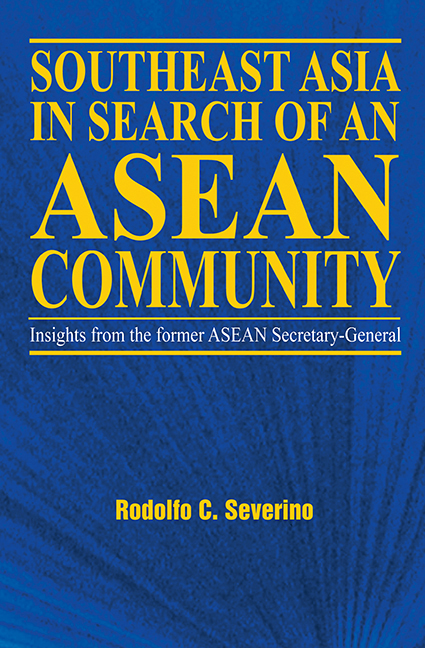Book contents
- Frontmatter
- Contents
- Foreword
- Introduction
- About the Author
- Acknowledgements
- Glossary
- 1 The “ASEAN Way”: Its Nature and Origins
- 2 Who Belongs in ASEAN? The Question of Membership
- 3 The Issue of Non-Interference
- 4 Regional Security: The ASEAN Role
- 5 Integrating the Regional Economy
- 6 ASEAN and the World
- 7 The ASEAN Community: Is It for Real?
- 8 What Kind of Future for ASEAN?
- Appendices
- Interviews
- Index
2 - Who Belongs in ASEAN? The Question of Membership
Published online by Cambridge University Press: 21 October 2015
- Frontmatter
- Contents
- Foreword
- Introduction
- About the Author
- Acknowledgements
- Glossary
- 1 The “ASEAN Way”: Its Nature and Origins
- 2 Who Belongs in ASEAN? The Question of Membership
- 3 The Issue of Non-Interference
- 4 Regional Security: The ASEAN Role
- 5 Integrating the Regional Economy
- 6 ASEAN and the World
- 7 The ASEAN Community: Is It for Real?
- 8 What Kind of Future for ASEAN?
- Appendices
- Interviews
- Index
Summary
The 1967 ASEAN Declaration states that “the Association is open for participation to all States in the South-East Asian Region subscribing to the aforementioned aims, principles and purposes”. While the declaration does not say that ASEAN must include all of Southeast Asia but is merely open to all states in it, this statement has been taken, as we shall see, as the founding members’ “vision” for the ultimate composition of the association.
This raises the question: what precisely is Southeast Asia? Which countries does the “South-East Asian Region” encompass? Several academics have traced the definition of Southeast Asia to Western scholarly works and to the application of military strategy — for example, the creation of Lord Mountbatten's Southeast Asia Command during World War II (headquartered in Colombo) — and to the interaction between them, particularly in relation to the United States’ war in Vietnam. Philip Charrier, an assistant professor of history at the University of Regina in Canada, has written a comprehensive and insightful review of the evolution of the concept of Southeast Asia.
One way of defining Southeast Asia, as the concept has evolved, is in terms of what it is not. It does not include China, Japan and Korea. Not Australia and New Zealand. Not India, or Bangladesh, which, until 1971, was part of Pakistan. Thus, one can conceive of Southeast Asia as being the area bounded by China (including Hong Kong and Taiwan), Japan and Korea in the north, Australia in the south, and Bangladesh and India in the west. In the east, while there were questions in the past about where Papua New Guinea belongs, both ASEAN and PNG have settled those questions by taking the official position that PNG is a “non-regional state” for purposes of the Treaty of Amity and Cooperation in Southeast Asia. As for Palau, also in the east, its possible ASEAN membership has never been taken into consideration by anyone, as far as I know. As I will go into later, there was the curious case of Sri Lanka, which once considered itself as having links, geographic, cultural, and commercial, with Southeast Asia but is now definitively regarded by all, including Sri Lanka itself as well as ASEAN, as part of South Asia rather than Southeast Asia.
- Type
- Chapter
- Information
- Southeast Asia in Search of an ASEAN Community , pp. 41 - 84Publisher: ISEAS–Yusof Ishak InstitutePrint publication year: 2006



